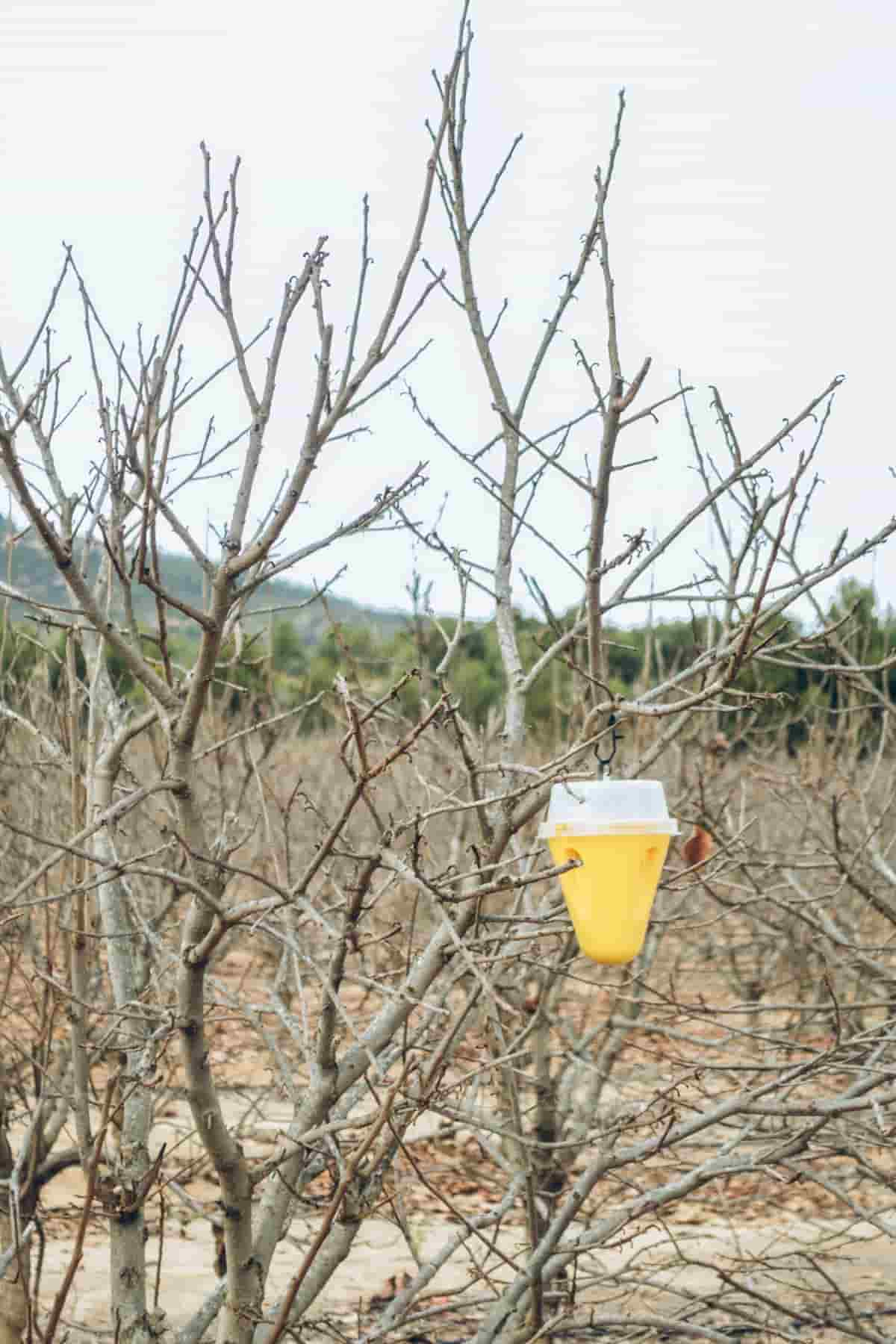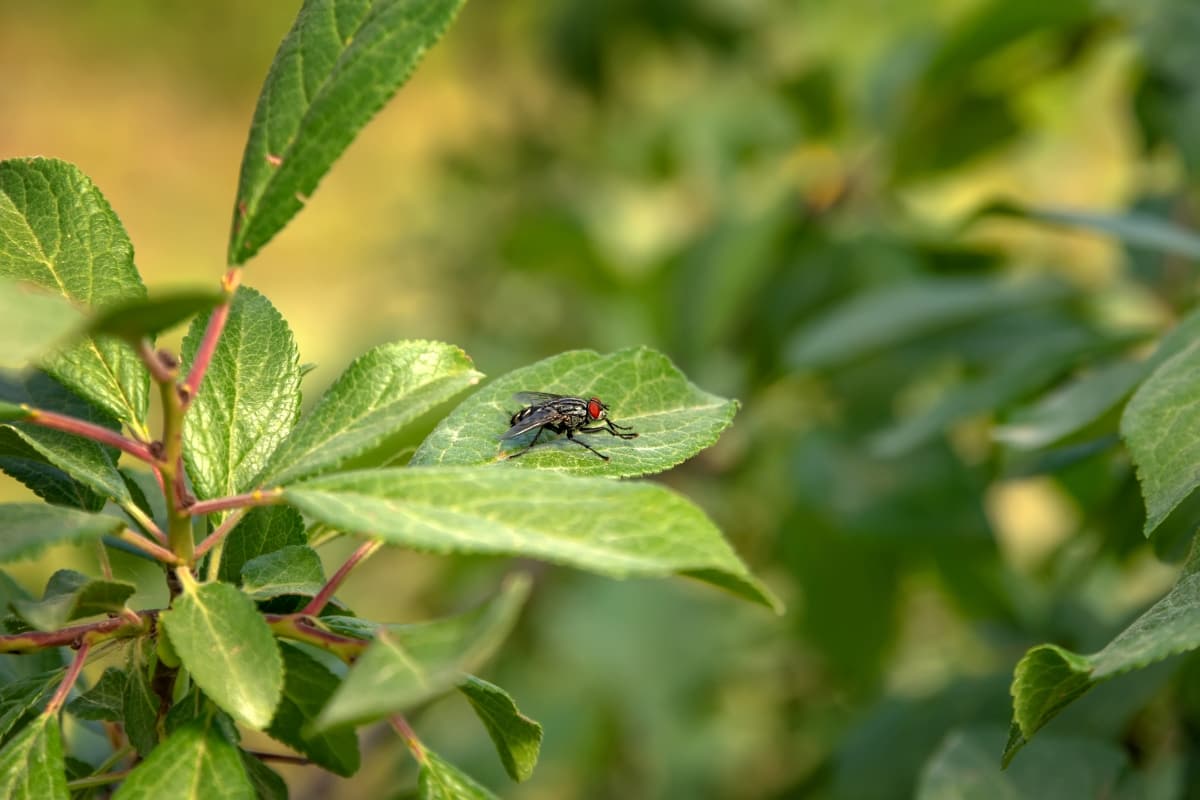Insect pests can cause significant crop damage and create a serious issue for farmers, particularly due to chemical resistance and lack of knowledge regarding which chemicals to use for specific pests. The use of chemicals can also have irreversible effects on living beings and the environment.

This is where pheromone traps come into play. Pheromone traps are cultural and biological methods for pest monitoring and control, and they play an important role in integrated pest management and sustainable agriculture. Pheromones are chemicals insects release for communication, such as attracting mates, warning of predating insects, or finding food. Using specific pheromones with lures is crucial for monitoring and controlling targeted pests in agriculture.
Benefits of the Pheromone Trap
What are Pheromone Traps?
Pheromone traps are devices used to monitor pest insects in crop fields using pheromone lures. They do not use toxins, so they are a sustainable replacement for chemical insecticides. They attract insects with pheromones, which are non-toxic and biodegradable, and trap them in an inescapable trap. Pheromone traps are highly popular among farmers due to their eco-friendly nature and cost-effectiveness.
They can be used in organic and natural farming and are integral to integrated pest management (IPM) systems. Pheromones are natural chemical compounds released by insects to communicate with their species or groups. They are very specific and only detectable by a particular insect species or group. Pheromones, secreted by female insects to attract mates, are commonly used as lures in pheromone traps.
Importance of Pest Control in Agriculture
Pest control in agriculture is important for crop protection and maximizing yields. Pests such as insects, rodents, and weeds can cause significant damage to crops, leading to decreased productivity and loss of revenue for farmers. Integrated pest management (IPM) is an eco-friendly and effective approach that involves using various pest control methods, including pheromone traps, to reduce the impact of pests while minimizing environmental harm.
How Pheromone Traps Work
- Pheromone lures are synthetically made and contain insect-specific chemicals that attract either male or female insects, depending on the type of pheromone used.
- Pheromone traps work by confusing insects in finding their suitable mating partner, reducing the next generation’s insect population.
- A typical pheromone trap comprises a cover/canopy, trap base/funnel, collecting device, and pheromone lure.
- The cover/canopy has an attachment site for the pheromone lure.
- The trap base/funnel guides the insects toward the collecting device.
- The collecting device can be a PVC box or a cylindrical polythene sheet, which should be tied with a rubber band to prevent insects from escaping.
- Pheromone lures are insect-specific and effective for 3-4 weeks; farmers must replace them after a particular time.
Types of Traps Used by Farmers in Agriculture
- Sticky traps: Gum-based traps catch and monitor whitefly, aphids, and thrips. Sticky traps are cardboard with a glue covering and pheromones to attract pests. Put 20 yellow traps and five blue traps on vegetables and flowers for thrips.
- Delta traps: These delta-shaped lures attract diamondback moths and Tuta absoluta. For tomato, potato, cabbage, and broccoli crops, 6-8 yellow plastic insect traps per acre are advised.
- Funnel traps kill pests with an insecticidal strip within the collection container and a lure hanging from the center of the web. Six funnel traps per acre are advised for bollworms, tobacco caterpillars, and pink bollworms. Cotton, maize, soybean, and tobacco crops use them for one year.
- Bottle traps lure male flies and capture them in bottle holes. Gherkins, mangoes, and watermelon are treated for melon fruit flies and peach fruit flies with yellow caps. 6-8 bottle traps per acre are advised.
- Water pan traps: Pheromones lure pests like the American pinworm to these water-filled traps. Tomato, potato, and eggplant crops require 8-10 traps per acre. Replace the lure every 4-6 weeks.
- Bucket trap: Insects enter these tree-hung traps. They control white grubs and red palm weevils on sugarcane, peanuts, and guava. Gunny bag-installed bucket traps are recommended at 4-5 per acre.
In case you missed it: How the Black Soldier Fly Converts Organic Waste into Animal Feed

DIY Style of Making Pheromone Traps
Making pheromone traps at home can be an inexpensive and eco-friendly way to monitor and control pest insects in your crops. The materials required for making pheromone traps are:
- Rubber septa (pheromone lures).
- Traps and pouches.
- Polythene sheets.
- Small pieces of wire for suspending the lures.
- A knife for opening the bottom.
- An insect brush and scissors.
To make the trap, cut the polythene sheets into the required size, make a polythene arm and fit it with the funnel. Place the rubber septa in the trap using bamboo sticks and erect it in the field. The lure will attract male insects to the trap, preventing them from mating and reproducing.
Benefits of Using Pheromone Traps in the Field
- Reduces the applications of harmful pesticides – By using pheromone traps, farmers can estimate the number of insects in their fields and set a strategy for pesticide use, avoiding unnecessary expenses and reducing the use of harmful pesticides.
- Economically affordable and easy to install – Pheromone traps are low-cost devices with less installation and maintenance costs, making them economically affordable and easy to install. The only recurring cost is the lure.
- Can detect low numbers of insect pest levels – If used properly, pheromone traps can detect low numbers of insect pest levels, making it easier for farmers to control the pests in their fields.
- Helps reduce the damage to the crop – Pheromone traps help reduce the damage to crops by catching the insects that could cause the most damage.
- Highly insect-specific – Pheromone lures are specific to particular species of insects, preventing large-scale damage to an ecosystem.
- Does not contain any toxins – Pheromone lures are not toxic to humans or other organisms, protecting the health of users and the environment.
- Easy to install in the fields – Pheromone traps are easy to use and install and do not require much higher installation skills. Their installation requires less labor, and they are a one-time installation device.
- Can be set before the flowering process – If farmers set a trap before the flowering process starts, it will be easier to control the number of pests in the fields, reducing crop damage.
In case you missed it: Drones for Fruit Farmers: Advantages and Benefits

How to Install Pheromone Traps in Agriculture
- Pheromone traps are an effective way to control pests in agriculture. To install a pheromone trap, wrap a transparent plastic sheet or PVC plastic around the funnel base to collect insects. Then, fix the standing poles at selected locations in the field, insert the trap, and tie them together. Next, insert the rubber capsule containing the pheromone lure on the downward side of the funnel using rubber gloves or a clean cotton cloth.
- Taking precautions while installing the trap is important, such as not touching the pheromone lure with bare hands, as dirt and oils can decrease its effectiveness. During the rainy season, small holes should be made in the collecting plastic to drain out rainwater.
- Some common insects that can be trapped using pheromone traps include the tobacco caterpillar, pink bollworm, diamondback moth, oriental fruit fly, cotton bollworm, melon fly, yellow stem borer, and red palm weevil.
Potential Challenges of Using Pheromone Traps in Agriculture
A few potential issues with pheromone traps in agriculture need to be considered. First, because pheromone lures are only accessible for specific types of insects, they cannot manage all insect infestations. Second, they could not work well in times of unexpected insect outbreaks. Finally, the efficiency of the lure for insects may change depending on the weather, such as wet or cold days.
Conclusion
A pheromone trap provides a cost-effective and environmentally friendly method of controlling insect pests, reducing reliance on chemical pesticides and increasing crop yields for farmers.
- Feed Your Flock for Less: Top 10 Tips to Save on Chicken Feed
- Ultimate Guide to Ossabaw Island Hog: Breeding, Raising, Diet, and Care
- Hatching Answers: The Top 10 Reasons Your Chickens Aren’t Laying Eggs
- Eggs and Economics: Breaking Down the Cost of Raising Backyard Chickens
- Defend Your Greens: Proven Methods to Keep Iguanas Out of Your Garden
- Ultimate Guide to Cinnamon Queen Chicken: A Comprehensive Guide for Beginners
- Ultimate Guide to California Tan Chicken: Breeding, Raising, Diet, Egg-Production and Care
- Ultimate Guide to Marsh Daisy Chicken: Breeding, Raising, Diet, and Care
- 10 Types of Chicken Farming Businesses You Can Start for Profits